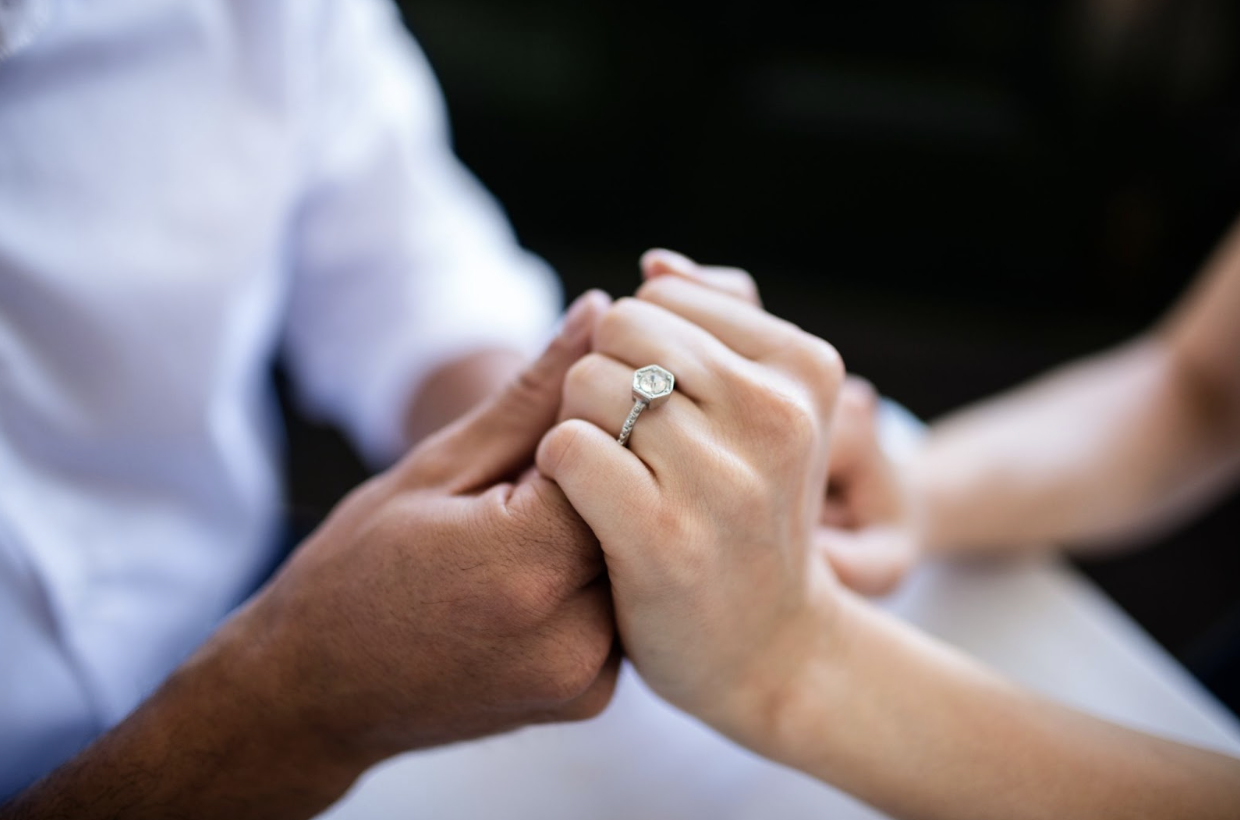Expressions of Love Across the Ages
Since ancient times, couples have been exchanging rings to signify their lasting love. The tradition of giving engagement rings to symbolize a lifelong commitment originated in ancient Egypt, when the circle was recognized as a symbol of eternity, and people of the time exchanged rings made of reeds and other natural materials. Ancient Romans gave their loved ones rings crafted from iron to symbolize the strength of their bond, and the Byzantine Era brought about rings carved with the likenesses of the couple. A popular ring style at that time was the fede motif, which united two rings to create an image of clasped hands. Rings were important symbols that represented status and were rife with religious and symbolic significance.
The first documented diamond engagement ring was given by Archduke Maximilian of Austria to Mary of Burgundy in 1477, setting a precedent among European aristocrats. Though styles have changed dramatically over the years, the diamond engagement rings that we associate with today’s proposals were popularized by the De Beers diamond company in 1947, with their iconic marketing campaign, “A Diamond is Forever.” With its unmatched rarity and radiance, the diamond, formed beneath the earth’s surface millions of years ago, is a symbol of enduring beauty and strength.
The 4 C’s of Diamonds
At King’s Jewelry, we understand that a diamond engagement ring purchase is one of life’s most significant choices. It’s a fine jewelry piece that you’ll wear for a lifetime, and pass on to future generations. Accordingly, it’s helpful to understand how diamonds are evaluated for quality. The 4 C's of diamonds are the widely accepted key factors used to evaluate the quality and value of your diamond. These factors are:
Carat: This is a unit of measurement that refers to the diamond’s weight. One carat is equivalent to 200 milligrams. Diamonds with larger carat weights are rarer and typically more valuable, but other factors like cut, clarity and color also significantly affect value.
Cut: A diamond’s cut impacts how well it reflects light, which determines its brilliance and sparkle. The cut is not about the shape but rather the angles, proportions, facets and finishing details. A well-cut diamond will appear more brilliant and scintillating.
Clarity: Clarity measures the presence of internal flaws (inclusions) and external imperfections (blemishes). Diamonds are graded on a clarity scale that ranges from Flawless (no inclusions or blemishes visible under 10x magnification) to Included (inclusions and/or blemishes visible to the naked eye). Usually, less flawed diamonds are more valuable.
Color: Diamonds are graded on a color scale from D (colorless) to Z (light yellow or brown). Colorless diamonds are the most valuable because they allow the most light to pass through, resulting in greater brilliance.
Understanding these four key factors helps in selecting a diamond that balances personal preferences with budget considerations. Our team is happy to answer any questions you may have about diamond quality and characteristics.
Alternative Gemstones for Your Engagement Ring
Modern trends allow for colored gemstones of all types and shapes. The contemporary couple loves to customize their bridal jewelry, including incorporating meaningful stones and even significant birthstones. Colored gemstones can be used as a vibrant accent for your engagement ring or as the center stone—no stone is off limits!
Though colored gemstone engagement rings are now thought of as a modern trend, they actually hearken back to Victorian times, when it was common to wear gemstones that had romantic, symbolic meanings. For instance, sapphire is associated with loyalty, pearl with innocence and emerald with fidelity. Don’t be afraid to step outside of the box and choose colorful designs that reflect your personal style.
Wedding Bands
It’s customary that the engagement ring is offered during a proposal, while a couple waits to wear their wedding bands until after their symbolic exchange on their big day. This tradition is also a long-standing one, probably originating around the 12th century when marriage became a holy sacrament in the church, and wedding bands were incorporated as part of the church-sanctioned ceremony.
Interestingly, today’s custom of men wearing wedding rings as a daily piece of jewelry became popular during World War I, when deployed soldiers would wear rings as reminders of their sweethearts back home. The sentimental practice soon caught on with civilians and is now common among married men in the U.S.
Men’s and women’s wedding bands come in a variety of styles, from traditional to trendy. Diamond wedding bands crafted from gold, white gold and platinum are popular, and some couples even incorporate anniversary bands into their bridal stack to commemorate relationship milestones.
Celebrate Love
King’s Jewelry is a family-owned and operated business that’s been celebrating love for over 100 shining years. We offer a wide array of engagement ring styles and loose diamonds, as well as expert custom design services. Make King’s Jewelry part of your family’s tradition when you choose us for your bridal jewelry purchase.
Related Article: Shining Through Time: The Evolution of Engagement Ring Styles

